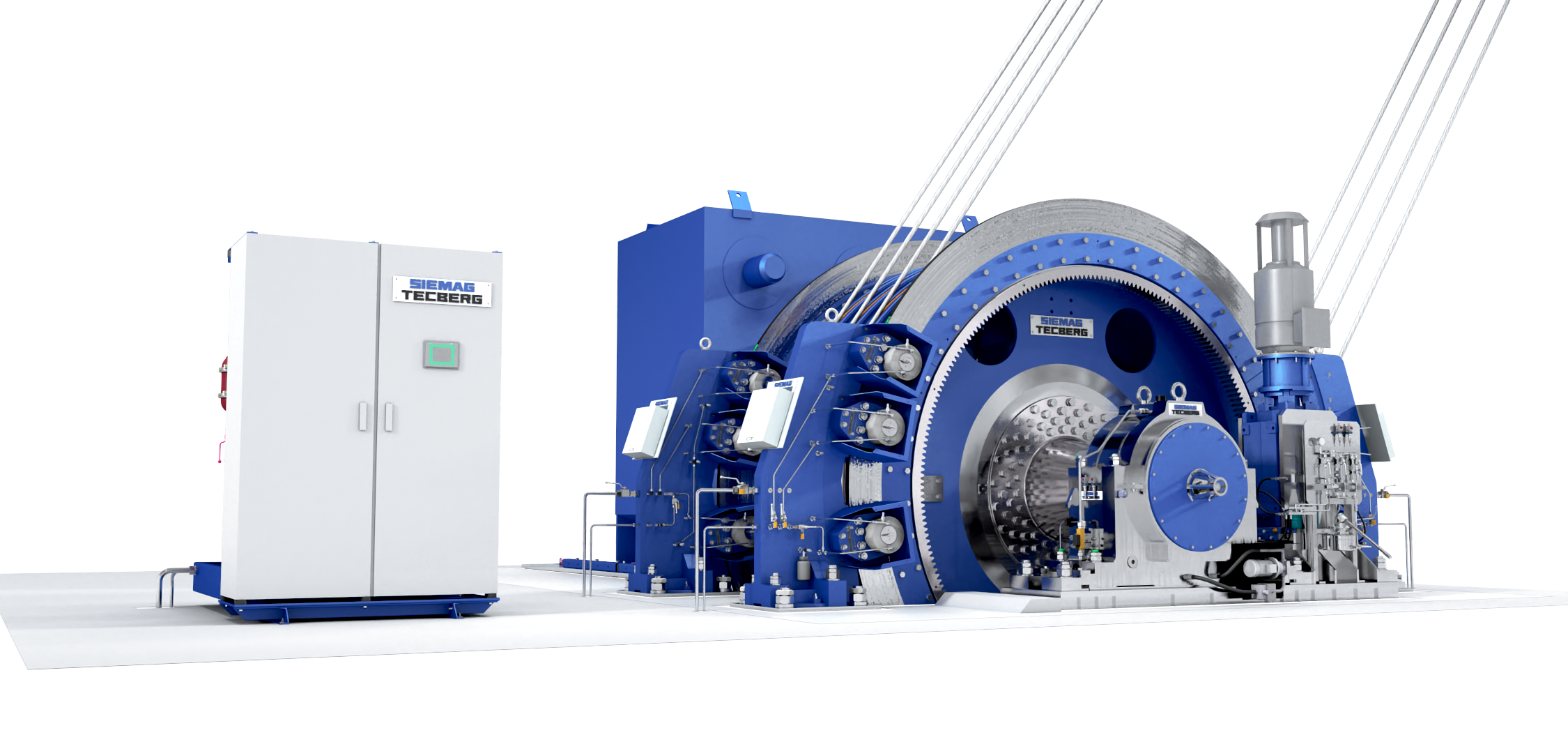Haiger, May 2020.
With the foundation of TECBERG HESE GmbH in 2019 and the commitment of a highly qualified staff of engineers and experts in the field of bulk materials handling technology, the SIEMAG TECBERG group is now expanding its competence in vertical conveyor technology to include horizontal conveyor technology for mines and open-cast mines, the power plant and steel and iron industry, as well as the stone & cement and processing, quarrying industry.
Bulk material conveyor systems are offered in the sense of „Applied Engineering“ as an integrated solution in which all relevant areas of bulk material and unit load conveyor technology are connected with each other through conception, design and production in order to guarantee tailor-made individual and complete solutions without interfaces. Global trends towards special machines, services and system solutions in a wide range of industries are driving demand for these products.
This puts the SIEMAG TECBERG group in a position to appear in this product area with comprehensive OEM plant competence in the field of horizontal conveying and corresponding handling technology for bulk materials.
Especially SIEMAG TECBERG group mining customers will therefore benefit from considerable rationalisation advantages in the area of interfaces and transfer stations from horizontal to vertical conveying. All services are provided with overall planning competence from a single source, all trades include comprehensive automation with the system integration of all plant components.
The skip feeding with weighing conveyor to be presented in this article already documents an overall planning profitability analysis of all system components at the interface between horizontal and vertical bulk material conveying in underground mining.
Advantages of skip feeding with weighing conveyor
The feeding of skips by means of a weighing conveyor with integrated belt scale has significant advantages over the principle of a classical belt conveyor with filling bag. Three aspects can be distinguished here: The type of system clocking, the mechanics to be used, as well as shaft construction requirements.
First of all, however, the main components and the basic mode of operation of a skip feeder with weighing conveyor are to be explained.
Components and functions of the weighing conveyor
A robust hopper discharger (see illustration weighing conveyor below, item 1) is used to feed the weighing conveyor with a constant volume of material. The conveyor runs at constant speed. The material volume discharged from the hopper via the conveyor is controlled by an adjustable layer thickness slider. The speed of the conveyor and the height of the slider define the material volume to the weighing conveyor to prevent volumetric overloading of the skip.
The band scale (item 2) integrated in the weighing conveyor is used to monitor the total weight of the material stored on the mweighing conveyor in order to prevent the payload of the skip from being exceeded. When the payload or volume of the skip is loaded on the weighing conveyor, the hopper discharger is switched off.
The weighing conveyor (item 3) is used to store and transport the material to be loaded into the skip and operates at two speeds. During the time when no skip is in loading position, the hopper discharge belt transports the material to the weighing conveyor. At this point the weighing conveyor moves at a slow speed. The slow speed is set to a value that ensures a high loading rate of the weighing conveyor. In this way, the total amount of material loaded into the skip is stored on a minimum belt length. When a skip is in the loading position, the weighing conveyor accelerates to high speed to transport the stored material into the skip in a short time.
A material detector (item 4) prevents material from being conveyed into the shaft in the event of faults in the conveying cycle if no skip is in loading position.
The 2-way-chute (item 5) is used to guide the material from the weighing conveyor to the desired skip. In normal operation, the chute is moved after each loading process to feed the respective skip (item 6).

The working cycle of the weighing conveyor
At the beginning of operation the hopper above the discharger is filled. After the hopper is full, the weighing conveyor is started and starts running at a slow speed. The hopper discharger can now be started and starts loading. Since the discharger delivers a defined volume flow, the loading time is on the one hand limited in time (preventing volumetric overfilling) and on the other hand controlled via the belt scale (preventing the payload from being exceeded).
The belt scale is mounted after the material guide, as the material has stabilized well in this area and the belt scale can measure the material weight exactly. By combining the weight data of the belt scale and the conveying speed, information about the mass flow is available. This information is used to calculate when the hopper discharger has placed a full skip load on the belt conveyor.
Within the loading period the two-way chute is moved into the correct position. After the full load has been loaded onto the weighing conveyor, the belt transports the material to a predetermined distance from the discharge point. When the batch of material reaches this point, the skip must be ready to fill. If the skip is not in filling position, the weighing conveyor can stop in time without throwing the batch into the shaft.
After receiving the load command from the control unit, the weighing conveyor is accelerated to full speed, which enables a very fast loading of the skip. After the belt has run empty, it is switched to slow speed and the hopper discharger starts loading again. During the loading process, the two-way chute is moved so that the material flow can be loaded into the second skip without having to provide an additional time interval.
Advantages of the weighing conveyor principle
The system is clocked in such a way that the material to be conveyed is always in motion, so that a continuous conveying process takes place. The weighing conveyor works without scheduled stops. The system cycle with continuous conveying offers a higher efficiency compared to a classic load cycle!
Conveying by means of a weighing conveyor has fewer mechanical components than a classic belt conveyor with two filling bags and a relatively sensitive vibration chute (Capex). In classical belt conveyors, these filling bags and the required closing slides are subject to high stress and thus require a much more frequent change of the lining (Opex). The lower proportion of mechanical components ensures less wear on the weighing conveyor!
Conveying by means of a weighing conveyor requires considerably less installation space in the shaft in the skip loading area due to the omission of the filling bags, and thus a much smaller excavation at the shaft already in the shaft sinking phase. The lower space requirement reduces the shaft construction requirements.
Conclusion
The required higher width of the belt with the weighing conveyor principle and also a somewhat higher performance design of the required drive technology do not reduce the economic advantages of continuous bulk material conveying by means of a weighing conveyor in comparison to classical belt conveying with filling bags.
With the weighing conveyor principle, the loading process is quasi-continuous, very low-wear and space-saving and therefore extremely effective. Investment and operating costs are demonstrably lower compared to classical belt conveyors with filling bags.
Summary - Principle comparison belt conveyor technology with weighing conveyors / with filling bags
Pros for weighing conveyor
- Discharge of the material to be conveyed under the hopper by robust belt conveyor
- Measuring and loading process takes place by means of a weighing conveyor (belt conveyor)
- Considerably less excavation required at the shaft
- No filling bags required
Cons for filling bags
- Sensitive vibration chute for discharging the material under the hopper
- Loading is done by means of two filling bags (capex)
- Additional space required (excavation) for installation of the filling bag
- High wear within the filling bags and at the locking slider, therefore much more frequent changing of the lining (opex)




